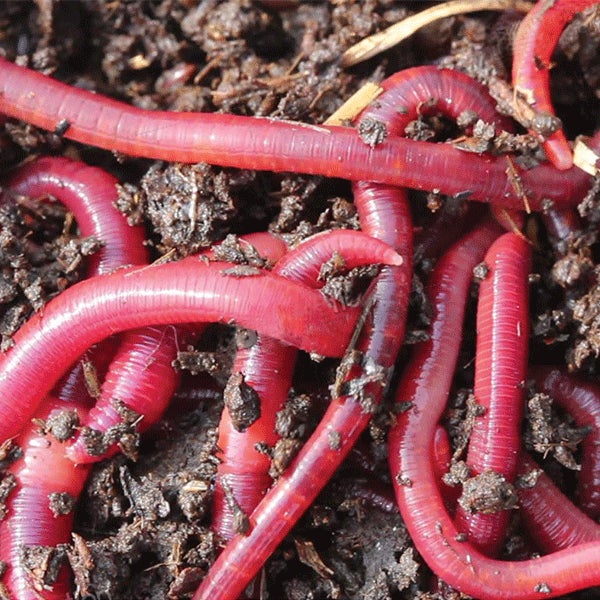Affordable red worms: Tips for raising them
Affordable red worms: Tips for raising them
Blog Article
The Role of Red Wigglers in Sustainable Horticulture
The integration of red wigglers right into sustainable horticulture practices supplies a compelling technique to boosting dirt wellness and lowering organic waste. The implications of utilizing red wigglers extend beyond simple composting; their duty in shaping a more sustainable future warrants a deeper exploration of their benefits and useful applications.
Recognizing Red Wigglers
Red wigglers, scientifically referred to as Eisenia fetida, are a varieties of earthworm renowned for their role in sustainable gardening and composting methods - red wigglers. These worms grow in decaying organic matter, making them especially reliable in converting cooking area scraps and backyard waste into nutrient-rich compost. Unlike standard earthworms, red wigglers have a greater tolerance for differing dampness degrees and can flourish in settings with bountiful organic material
(red worms for composting)Typically, red wigglers are smaller than their earthworm equivalents, typically gauging in between 3 to 4 inches in length. They have a reddish-brown coloration and have a fractional body structure that helps in their burrowing and feeding activities. These microorganisms are hermaphroditic, implying each individual has both male and female reproductive body organs, which permits efficient populace growth under optimum conditions.
The environment preferences of red wigglers consist of moist, dark settings abundant in natural content, such as compost bins or worm farms. Their eco-friendly function expands beyond composting; they are integral in freshening the dirt and promoting vitamins and mineral cycling, which ultimately adds to healthier garden ecosystems. red wigglers. Comprehending the biology and actions of red wigglers is vital for those looking for to execute effective vermicomposting in sustainable horticulture
Advantages of Vermicomposting
Vermicomposting offers many benefits that enhance sustainable horticulture techniques and add to ecological health. One of the primary advantages is the makeover of organic waste into nutrient-rich compost, which improves soil framework and fertility. The spreadings generated by red wigglers are packed with valuable microorganisms and vital nutrients, making them a superb natural fertilizer.
Additionally, vermicomposting substantially lowers landfill waste. By diverting kitchen scraps and yard waste from garbage dumps, this technique not just minimizes methane emissions-- a powerful greenhouse gas-- yet also promotes a circular economic climate, where waste is repurposed as a source.
An additional benefit is the improvement of dirt aeration and drain (red wigglers). The burrowing task of red wigglers develops networks in the dirt, permitting air and water to pass through even more conveniently, hence fostering a healthier origin system for plants
Moreover, vermicomposting can be done on a small scale, making it obtainable for metropolitan gardeners and those with restricted area. This technique encourages ecological stewardship and recognition, as people end up being a lot more involved with their waste administration practices. Inevitably, vermicomposting represents a lasting, reliable, and eco-friendly strategy to horticulture that benefits both plants and the planet.
Just How to Beginning Vermicomposting
Beginning your very own vermicomposting system can be a fulfilling undertaking that improves your sustainable horticulture methods. To begin, select an appropriate container, such as a plastic container or wood box, with great drainage and air visit site flow. The dimension will depend on the quantity of kitchen area scraps you produce; a bin of 10-14 gallons usually is adequate for a house.
Following, prepare the bed linen product. Shredded paper, cardboard, and coconut coir are exceptional options, giving a comfy environment for the red wigglers. Go for a bed linens deepness of regarding 4-6 inches, which should be damp however not soaked.
When the bedding is developed, introduce your worms. Red wigglers (Eisenia fetida) are one of the most suitable for composting. Start with around one pound of worms for each 2-3 pounds of cooking area scraps weekly.
Begin adding cooking area waste, avoiding meat, milk, and oily foods, as these can draw in insects and develop odors. Frequently keep track of the container's moisture degrees and temperature, ensuring it continues to be within the optimal array for worm task. With these initial actions, you'll be well on your method to developing nutrient-rich garden compost for your yard.
Maintaining a Healthy And Balanced Worm Container
A growing worm container needs constant treatment and focus to keep an ideal environment for the red wigglers. Secret variables to keep track of include wetness degrees, temperature level, and food supply. Maintaining a wetness degree similar to a wrung-out sponge is critical; excessive water can cause anaerobic problems, while inadequate can dehydrate the worms.
Temperature is additionally critical, as red wigglers flourish in an array of 55 to 77 levels Fahrenheit. Extreme temperatures can worry the worms, potentially causing death. Therefore, placing the bin in a climate-controlled area or using protecting products can aid manage temperature level variations.

Last but not least, aeration is vital. Frequently turning the bed linens and utilizing a fork or shovel can avoid compaction and promote air movement, guaranteeing a healthy, growing environment for the red wigglers. By adhering to these practices, gardeners can keep an efficient worm container that supports sustainable gardening efforts.
Influence On Dirt Health
Enhancing soil health and wellness via the use of red wigglers is a basic aspect of sustainable horticulture. By consuming organic issue, red wigglers damage down complex materials into easier substances, a procedure known as vermicomposting.

(red worms for composting)Researches have revealed that dirts enriched with worm castings display boosted microbial task and improved fertility, resulting in greater plant returns. By including red wigglers into gardening practices, garden enthusiasts not only enrich their soil however additionally add to an extra lasting agricultural system, emphasizing the interconnectedness of soil health and environmental stewardship.

Final Thought
In final thought, red wigglers considerably add to lasting gardening through their reliable vermicomposting methods. By promoting waste reduction and fostering a round economic climate, red wigglers arise as necessary elements in environmentally friendly gardening campaigns, underscoring their vital duty in environmental sustainability.
Report this page